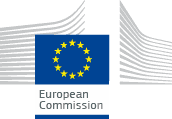
The Rapid Analysis and Spatialisation Of Risk (RASOR) project developed a platform to perform multi-hazard risk analysis to support the full cycle of disaster management, including targeted support to critical infrastructure monitoring and climate change impact assessment. Athena served as project manager for the initial FP7 project and continues to manage growth in close consultation with RASOR lead partner CIMA Foundation. RASOR adapts the newly developed 12m resolution TanDEM-X Digital Elevation Model (DEM) to risk management applications, using it as a base layer to interrogate data sets and develop specific disaster scenarios. RASOR overlays archived and near-real time very-high resolution optical and radar satellite data, combined with in-situ data for both global and local applications. RASOR was initially available over five case study areas. The RASOR Consortium now offers global services to support in-depth risk assessment and full-cycle risk management. RASOR offers full functionality in areas where users have uploaded data.

The project "South East Asia Flood Risk Assessment for Regional DRF Mechanism" is developing a web-based tool for rapid assessment of impact in the immediate wake of a flood disaster to support rapid response financing. The tool will also be used to calculate risk profiles for the three countries of interest, based on derived frequencies (probabilities) of flood events. Athena had lead responsibility for developing the strategy for the integration of satellite Earth observation into the platform.



Since 2014, the Committee on Earth Observation Satellites (CEOS) has been working on means to increase the contribution of satellite data to recovery from major disasters. A Recovery Observatory Oversight Team (ROOT) was created with representatives from the satellite data providers, the international recovery stakeholder community and value-added providers. It oversaw the development of basic infrastructure, monitors international events for potential triggering. In December 2016, the Recovery Observatory was triggered over Haiti to monitor recovery after hurricane Matthew. Athena serves as Secretary to the RO Steering Committee and continues to advise RO leads CNES and CNIGS in the management of the Observatory. GFDRR, UNDP, the European Commission, and CEOS are currently considering work necessary to create a generic RO that could be regularly triggered after major events.


The Group on Earth Observations – Data Access for Risk Management (GEO-DARMA) aims to support risk reduction activities through the implementation of end user priorities in line with the Sendai Framework in the developing world. The main goal is to address critical issues related to Disaster Risk Reduction (DRR) affecting countries in three regions: Asia, Latin America/Caribbean, and Africa. This is being done through a series of projects (initially demonstrators) that rely on the use of multiple sources of observation (space, in-situ, socio-economic, models outputs, etc.). Each project will involve data providers, data & information practitioners, regional institutions, governmental agencies, local decision makers, and scientists. The ultimate goal is to establish an inclusive, comprehensive process to address local DRR requirements by using EO technologies efficiently. Athena has coordinated the regional assessment reports for all three regions, and played an active role in establishing new pilot projects. Athena is the Secretary of the GEO-DARMA Steering Committee.

In order to optimise and better coordinate satellite Earth observations, CEOS created the Working Group on Disasters (WGDisasters) at its 2013 Plenary meeting.The overarching goals of the WGDisasters are to increase and strengthen satellite Earth observation contributions to the various Disaster Risk Management (DRM) phases and to inform politicians, decision-makers, and major stakeholders on the benefits of using satellite Earth Observations in each of those phases. To achieve these goals, CEOS Agencies have agreed to a series of objectives/actions that will improve the coordination of Earth Observations satellites, improve satellite Earth Observation data distribution, and foster the use of satellite data by DRM users. Athena has served as Secretary to the WG Disasters since its inception, under contract successively to the European Space Agency (ESA), the Canadian Space Agency (CSA), and current Chair, the Italian Space Agency (ASI).

The RADARSAT Constellation is the evolution of the RADARSAT Program with the objective of ensuring data continuity, improved operational use of Synthetic Aperture Radar (SAR) and improved system reliability. The three-satellite configuration will provide daily revisits of Canada’s vast territory and maritime approaches, as well as daily access to 90% of the world’s surface. Athena drafted the User Requirements Document (URD) for the mission as well as the first Mission Requirements Document (MRD) and served as Secretary to the User and Science Team.

Athena completed a detailed review of National Remote Sensing Data Requirements including gaps and opportunities for ACRES (over 60 organizations interviewed across Australia) and made recommendations on implementing access to satellite EO, ultimately concluding in a two-day workshop organised by Athena Global in Canberra where stakeholders examined specific contributions of satellite EO in Australia to emergency management, coastal zone management and the environment.

The Canadian Space Agency commissioned Athena to organise and serve as Secretary to the Polar Communications and Weather satellite (PCW) mission User and Science Team. Still under development, the system would comprise two satellites to serve Canada’s communication needs, as well as providing near-real time meteorological data over the North Pole.

The Canadian Space Agency (CSA) conducted mission and payload concept studies for a possible Canadian hyperspectral Earth observation satellite. The Hyperspectral Environment and Resource Observer (HERO) mission aimed to provide information-rich optical imagery that enhances decision-making and stewardship of sensitive ecosystems and natural resources. The mission would also have provided accurate forest inventory and forest health information, have mapped the geology of the North, assessed environmental impacts, and strategically extended the Canadian investment in Earth observations. In 2005, the preliminary system requirement review (PSRR) and phase A (preliminary mission definition) were concluded. Athena provided a comprehensive cost-benefit study, which was presented to the Canadian Cabinet.
